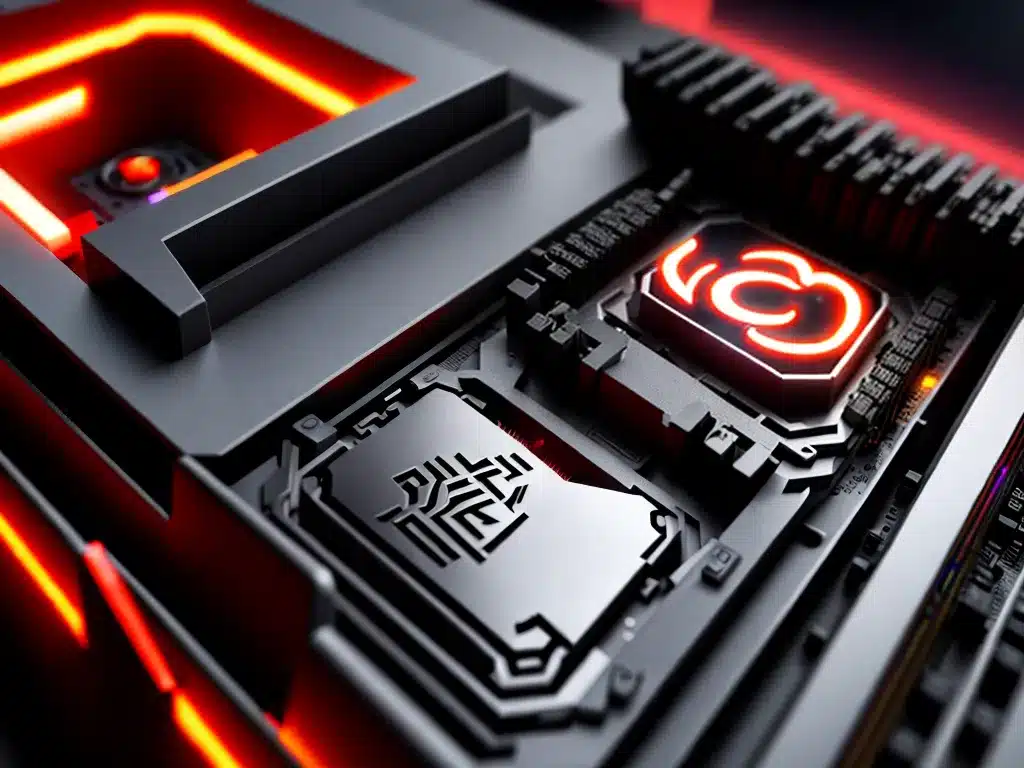Introduction
The Ryzen 9 7970X is AMD’s newest flagship desktop processor, featuring 16 powerful Zen 4 cores. Out of the box, this chip offers incredible performance for gaming, streaming, content creation and productivity. However, with some overclocking, we can push the 7970X even further, extracting every last drop of performance. In this guide, I’ll walk you through everything you need to know to overclock the 7970X and optimize it for your workload.
Overclocking Basics
Before we dive in, let’s go over some basic overclocking terminology and principles:
-
Frequency (MHz) – This refers to the clock speed of the CPU. Overclocking increases this above the stock speed for more performance.
-
Voltage – Higher voltages allow more power delivery for increased frequencies, but also produce more heat.
-
Temperature – Overclocking produces extra heat, so monitoring temperatures is crucial to avoid thermal throttling.
-
Stability Testing – Stress tests confirm your overclock is stable and free of errors at loaded conditions.
The key is finding the maximum stable frequency and voltage combination for your particular 7970X chip and cooling solution. This takes some trial and error testing. Let’s look at how to do this properly.
Overclocking Step-by-Step
1. Update BIOS, Chipset Drivers
Make sure your motherboard BIOS and AMD chipset drivers are updated to the latest versions. New updates often improve overclocking capabilities and stability.
2. Choose an Overclocking Tool
AMD Ryzen Master is the recommended overclocking tool, offering granular control and real-time monitoring. Other good options include your UEFI BIOS and third-party tools like EVGA Precision X1.
3. Test Stock Settings
Run stress tests at stock settings to establish a performance baseline for your specific 7970X chip. Cinebench R23 multi-core and CPU-Z benchmakrs are good options. Note temperatures and clock speeds.
4. Increase Frequency
Gradually increase CPU frequency in increments of 50-100MHz, testing stability each time. AMD recommends staying below 4.7GHz for air cooling or 5.5GHz with exotic cooling. Watch temperatures closely.
5. Increase Voltage
If stability issues arise, small voltage increases up to 1.45V can allow for higher frequencies. But more voltage means more heat – find the lowest stable voltage for your overclock.
6. Stress Test for Stability
Run intensive stress tests like Prime95 and AIDA64 for at least an hour each. If no crashes or errors occur, the overclock is stable. Monitor temperatures constantly.
7. Benchmark Performance
Use benchmarks like Cinebench R23 and 3DMark to quantify performance gains from overclocking. Compare against your stock results.
8. Daily Usage Testing
Conduct normal daily workloads like gaming and content creation. If any stability issues arise, scale back frequency or voltage slightly.
Advanced Overclocking
For extreme overclockers and liquid nitrogen cooling, there are some additional techniques to eke out every drop of performance:
-
Per CCX Overclocking – Overclock the two CCX complexes separately for greater control.
-
Curve Optimizer – Undervolt to reduce power limits and thermals for potentially higher boosts.
-
Memory Overclocking – Tighten memory timings and increase infinity fabric clock for better performance scaling.
-
Benchmark Tweaking – Modify system settings specifically for benchmark runs to set records.
However, these methods require advanced expertise and are not necessary for most users just looking for a simple overclock.
Is Overclocking Worth It?
Overclocking the 7970X can provide noticeable gains in both gaming fps and productivity application performance. However, the gains diminish with the level of overclock. Going from stock to 4.5GHz may give a 10% boost, but 4.5GHz to 5.0GHz could be only another 2-3%.
Higher overclocks also require more voltage and generate more heat. So make sure your cooling solution can handle it. For air cooling, an overclock of 4.5-4.7GHz is recommended. With a beefy AIO or custom loop, you can push closer to 5.0GHz. Anything above that provides minimal returns and requires exotic cooling.
In summary, overclocking the 7970X can be worth it if you have thermal headroom and want to extract a bit more performance. But for many users, AMD’s Precision Boost algorithm already does a good job optimizing performance out of the box.
Conclusion
The Ryzen 9 7970X is an overclocking beast, responding well to frequency and voltage increases. With proper cooling and stability testing, overclocks up to 5.0GHz on all 16 cores are achievable. This can provide tangible boosts in both gaming and workload performance. While exotic cooling and benchmark tweaks can push things even further, a simple overclock delivers the best return for most users. So if you have a 7970X,grab your preferred overclocking tool, do some testing, and enjoy the extra speed!













